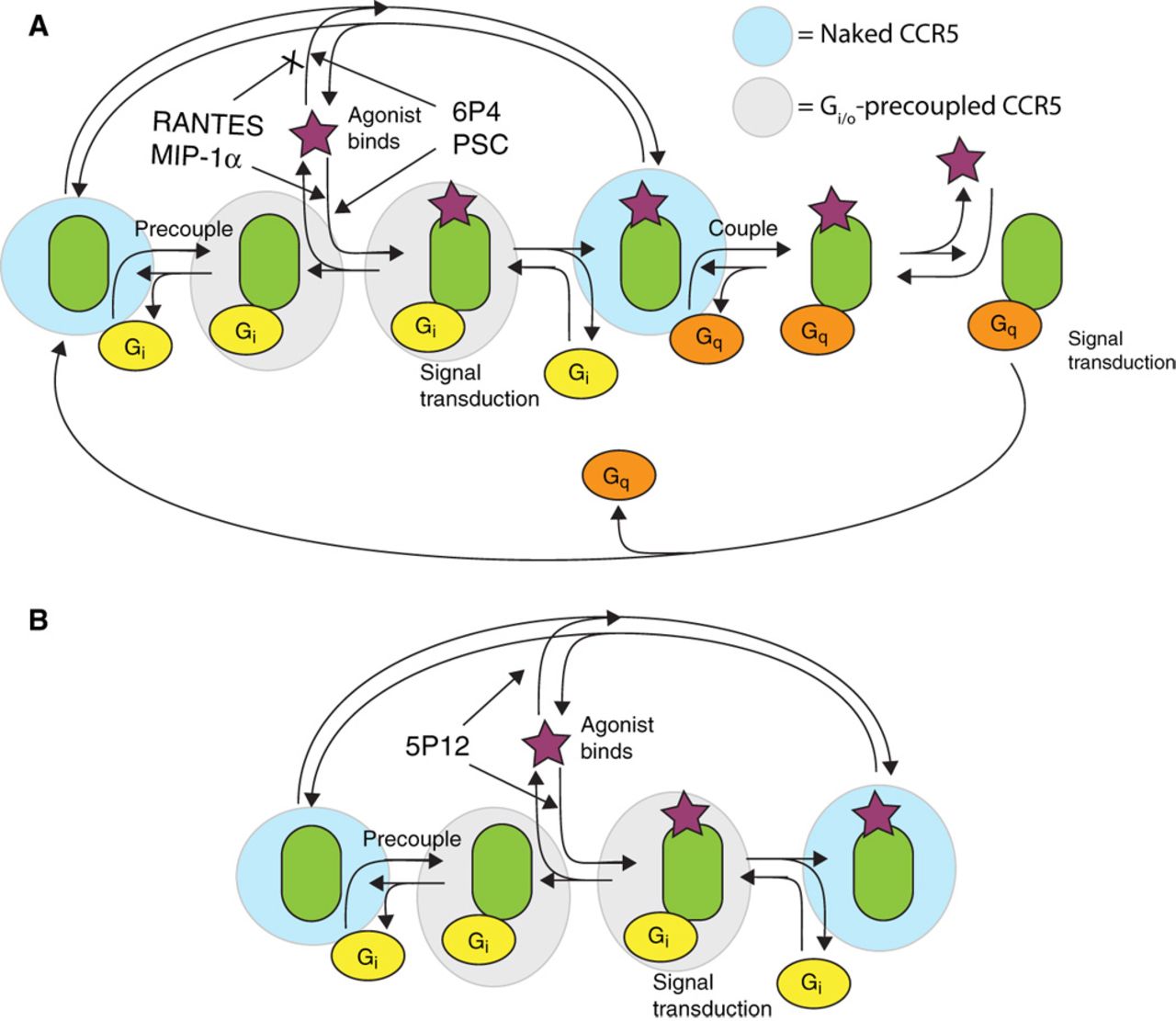Publications
-
G protein specific signaling bias in a series of CCR5 chemokine analogs
Emily Lorenzen, Yamina A. Berchiche, Emilie Ceraudo, Carlos A. Rico, Alexandre Fürstenberg, Thomas P. Sakmar, and Thomas Huber
Sci. Signal. 2018, 11(552), eaao6152 (1-11)
 |
Chemokines and some chemical analogs of chemokines prevent cellular HIV-1 entry when bound to the HIV-1 coreceptors C-C chemokine receptor 5 (CCR5) or C-X-C chemokine receptor 4 (CXCR4), which are G protein–coupled receptors (GPCRs). The ideal HIV-1 entry blocker targeting the coreceptors would display ligand bias and avoid activating G protein–mediated pathways that lead to inflammation. We compared CCR5-dependent activation of second messenger pathways in a single cell line. We studied two endogenous chemokines [RANTES (also known as CCL5) and MIP-1α (also known as CCL3)] and four chemokine analogs of RANTES (5P12-, 5P14-, 6P4-, and PSC-RANTES). We found that CCR5 signaled through both Gi/o and Gq/11. IP1 accumulation and Ca2+ flux arose from Gq/11 activation, rather than from Gβγ subunit release after Gi/o activation as had been previously proposed. The 6P4- and PSC-RANTES analogs were superagonists for Gq/11 activation, whereas the 5P12- and 5P14-RANTES analogs displayed a signaling bias for Gi/o. These results demonstrate that RANTES analogs elicit G protein subtype–specific signaling bias and can cause CCR5 to couple preferentially to Gq/11 rather than to Gi/o signaling pathways. We propose that G protein subtype–specific signaling bias may be a general feature of GPCRs that can couple to more than one G protein family.
DOI: 10.1126/scisignal.aao6152
Archive ouverte / Open archive: unige:110713
